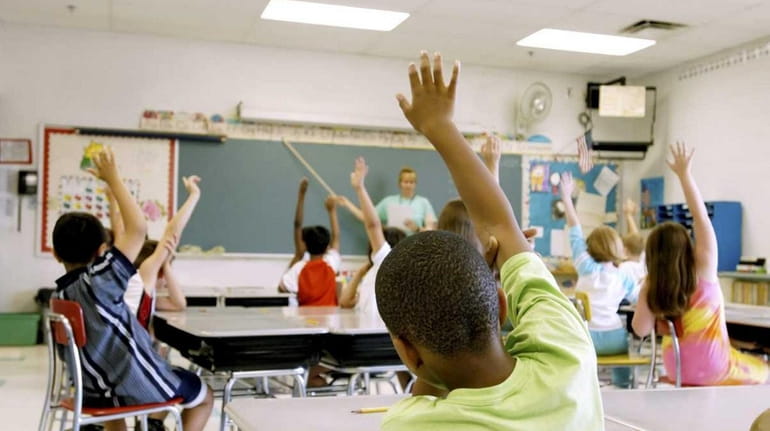Editorial: Fix New York State's school funding system

Credit: iStock
The public school funding quandary in New York is like those word problems that can make math class torture, with one big difference. Those classroom queries have perfect solutions that anyone who understands the problems and the techniques for solving them can agree on. When it comes to how to fund our schools adequately and fairly, there are no perfect solutions because once the variable of politics is introduced, every answer leaves needs unmet or constituencies angry.
According to a study from the Manhattan-based Citizen’s Budget Commission, New York’s “foundation aid” formula indicates that it would cost the state’s 674 school districts $62.6 billion combined to provide a “sound, basic education” to all students in the 2019-20 school year. The state’s school districts will spend about $8 billion more than that. But according to the nonprofit research and advocacy group, 29 high-needs districts in New York, including Wyandanch and Brentwood, will not spend enough money to provide the sound, basic education required by the state constitution. Those numbers are arrived at via a state foundation aid formula that determines per-student needs by looking at the cost-of-living and education challenges in districts.
Advocates for the neediest districts argue that these schools don’t get enough funding. The say that’s because there is little wealth in those districts to raise money through property taxes, because the state budget does not put enough money into K-12 funding and because too much state aid goes to districts that could afford to fund their schools without it. The advocates ask: Why should wealthier districts that have relatively few academically challenged students get state aid at all?
Advocates for the higher-wealth districts say the state gives them back far less than their residents send to Albany. In the races for Long Island’s State Senate seats, the greatest competition is often over who will fight hardest to bring more money to the Island’s districts, the vast majority of which do not have high needs or low wealth.
On the surface, the idea that well-off districts shouldn’t get state aid because it’s better spent on districts that can’t easily levy taxes and are overwhelmed with low-income, less academically prepared children, is compelling. But middle-class and upper-class districts must get state school aid for the same reason upper-middle-class and wealthy people get Social Security checks and Medicare benefits. These funding mechanisms, which do redistribute wealth, need broad support, and that means everyone who pays in has to believe he or she gets at least some benefit back.
Serious educational challenges
It’s not that the underfunded districts spend so little. Wyandanch, after a year of financial turmoil and two budgets rejected by voters, will spend about $25,000 per student. Brentwood will spend approximately $22,000. The state average is about $24,500. And it’s not that the state does not send far more money to these districts than wealthier ones: Both Wyandanch and Brentwood will get more than $15,000 per student in state funding in 2019-20, while the more prosperous Smithtown district will receive just $3,500 per student in state aid, and Roslyn will get about $2,000 per child.
But the poor districts are beset by educational challenges. The state assigns a cost to addressing those challenges that it then fails to meet.
So what is to be done?
First, fund these districts. The shortfall for all 29 combined is only $83 million, and state aid to schools is $27 billion. It makes no sense to fail to properly fund needy schools over a rounding error. Next, revamp the formulas, which are out of date in how they measure poverty and challenges and minimize the needs in poor districts.
Then end the practice of school districts hardly ever seeing declines in foundation aid. No district should see a per-capita cut in aid, but wealthy districts losing enrollment shouldn’t see equal funding in perpetuity, much less the annual increases they often get.
The state also needs to continue its recent push to make districts post more information online on how they spend, and school boards and watchdogs should keep a closer eye on outlays that can be irresponsible. So do residents, who know what’s going on in schools and must demand frugality and accountability. And challenged districts could work on providing more support to parents and counseling to help address problems.
Paradox of needs and resources
If we were devising a school-funding system from scratch, relying on local property taxes and supplementing it with state aid wouldn’t be the way to go. Our system automatically leaves the poor communities that need to spend most on education least able to do so, and engenders endless and bitter political battles over how the state should address these shortfalls.
It’s virtually impossible to start from scratch. But what we can do is make the school funding system work better, because we cannot afford not to give every New York student the education he or she needs.
